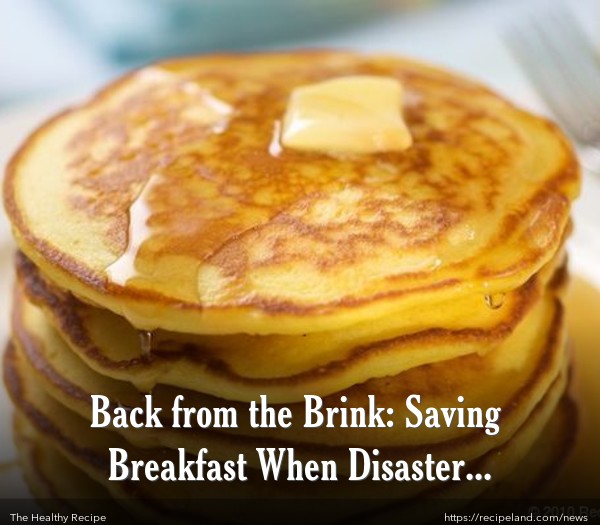How often have you walked into the kitchen, dreaming of a warm and deliciously satisfying breakfast, only to have your hopes dashed to the ground by a breakfast-making disaster? Do you find yourself repeatedly having to throw away ruined breakfast dishes?
Never-fear, help is on the way! Keep reading to find solutions for common breakfast-making problems and how to prevent making these same mistakes in the future. You will also find delicious, go-to recipes for your favorite breakfast foods.
Meat Mishaps:
Canadian bacon dried out: Cut it into cubes and add it to hash browns, an omelette, or scrambled eggs.
Bacon burned or cooked unevenly: When frying in a pan, stay with your bacon and don’t let it rest in the pan. Frequently move and turn the bacon over. Prevent the whole problem by crisping your bacon in the microwave with a bacon crisper. You can also prepare perfectly crisp bacon in the oven by laying out your strips of bacon on a cooling rack and then setting the cooling rack in a rectangular cake pan. Place the pan in the oven and bake in a 400 degree oven. Check for doneness at 12 minutes. Thicker bacon will need to cook for a longer period of time.
Sausage or bacon gravy is swimming in fat: Add ice cubes to your gravy and remove them once the fat sticks to them. Next time, carefully drain your sausage or bacon and pat it dry with paper towels before adding it to your gravy.
Pancake Problems:
Corn pancakes sticking to the frying pan or griddle: Add a pat of butter to the pan or griddle before adding each round of pancakes.
Pancakes too dry on the edges: Spread them with room temperature butter and syrup. Keep your pancakes warm in a 170 degree F oven until all of your batter is fully cooked. Pour your pancake batter evenly into the pan or onto the griddle so your pancakes cook evenly throughout. Make sure your pan or griddle is not too hot to keep the edges of your pancakes becoming too dry while they cook.Egg Catastrophes:
Omelette falls apart as you flip it: Break it into pieces and make a scramble. The best way to improve your omelette-flipping skills is to practice, practice, practice. Be careful not to overload your omelette with too much filling as this will make it difficult to flip. If your omelette fillings are not quite warm enough when the eggs are fully cooked, heat the omelette in the microwave in 10 second bursts until the filling is at the right temperature.
Scrambled eggs to dry or crispy: Stir in a pat of room temperature butter to coat the eggs and add cheese. This will give your eggs a rich velvety texture. Next time, cook your eggs until they just lose their runny appearance.
Scrambled eggs cool off while you prepare other dishes: Stir in room temperature butter and some cheese and then reheat them in the microwave at medium-low heat in 60 second increments until they are at the proper temperature. Next time, cover your dish of scrambled eggs with a damp paper towel and set them in the microwave or a warm oven.
Miscellaneous Mistakes:
Dish is too salty: Add more of the other ingredients in your dish until the saltiness reaches a level that suits your palate. To prevent your dishes from being too salty in the future, taste them and adjust the seasoning as you go.
Icing texture is wrong: If your icing is too thin, add more powdered sugar until it is a spreadable texture. If the icing is too thick, add more of the liquid called for in your recipe until it becomes easy to spread. Avoid bad icing texture by gradually adding liquid to your powdered sugar until your icing reaches your desired texture.
Mushy, paste-like hash browns: You probably steamed your hash browns instead of crisping them. Spread the hash browns in a thin, even layer on a greased cookie sheet and place them under a preheated broiler until they are brown and crispy. Watch them closely to make sure they do not burn. Next time, be sure to cook your hash browns in a thin layer in your skillet, no more than half an inch. You might have to make your hash browns in batches, keeping the cooked hash browns warm in a oven set at 170 degrees F.
Recipes:
Omelettes:
Breakfast Mushroom and Cheese Omelette
Breakfast Pizza:
Pancakes:
Corn Cakes:
Breakfast Cereal:
Cinnamon Oatmeal Breakfast Pudding
Breakfast Sandwiches:
Open Face Spinach Egg Sandwich
Muffins and Quick Breads:
Pancakes and Waffles:










Comments